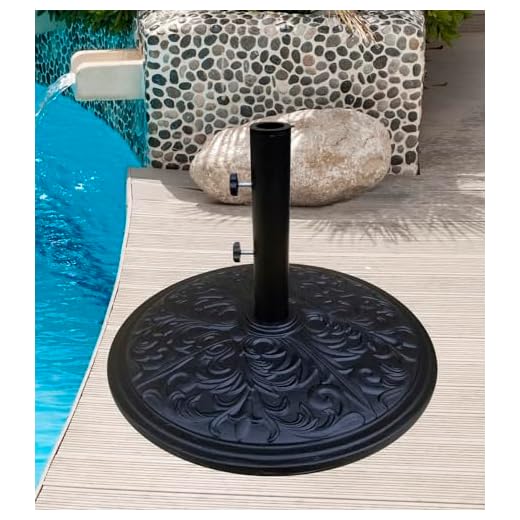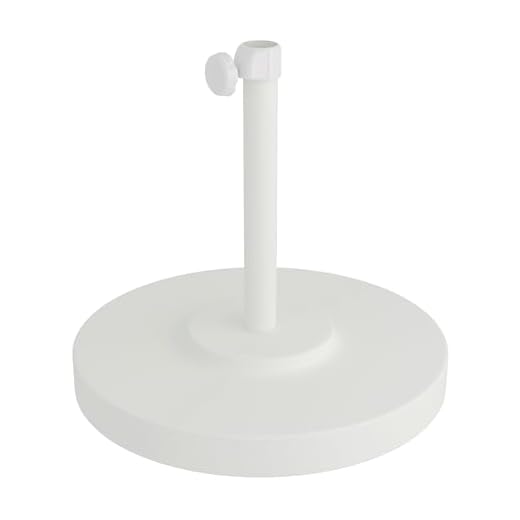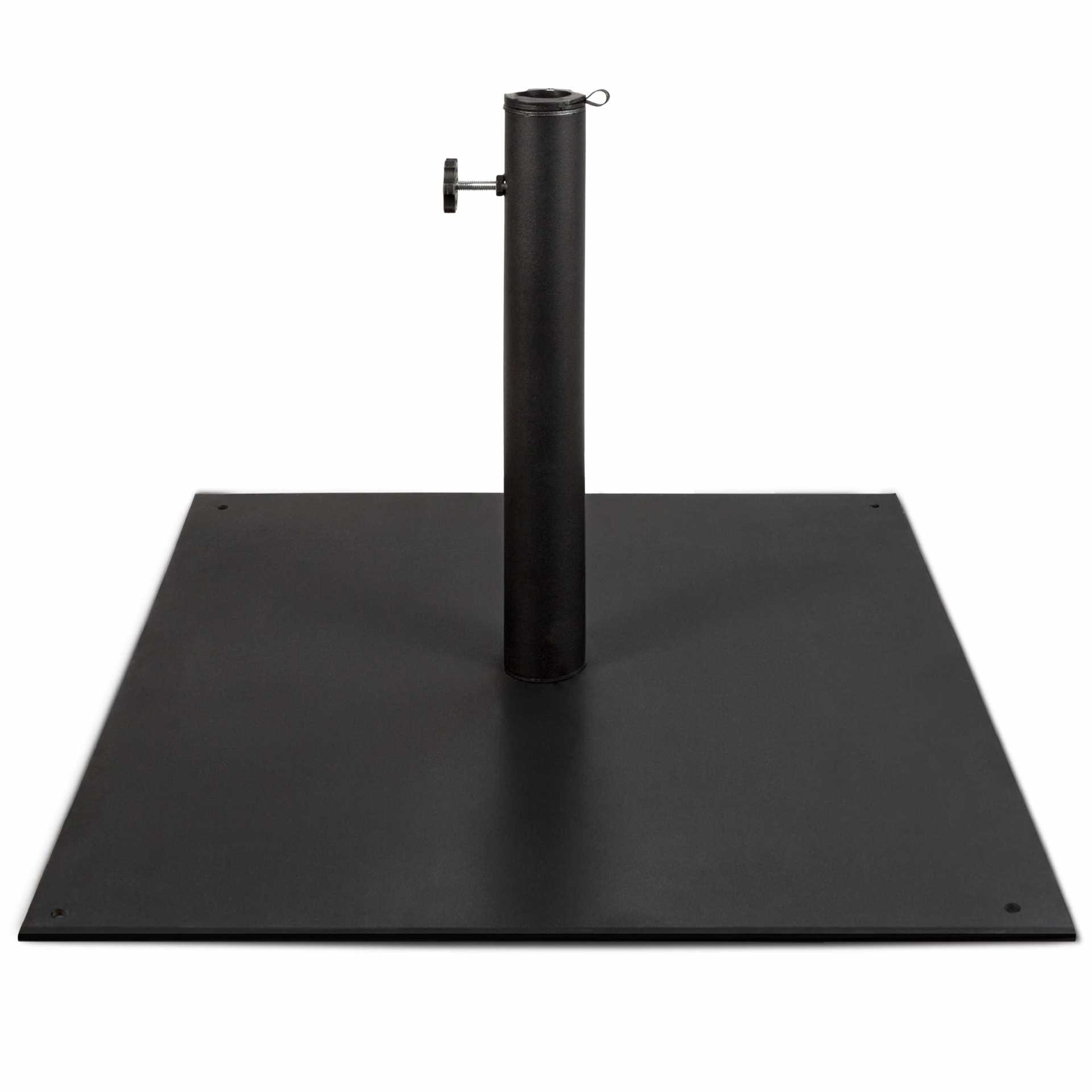




For those seeking stability and security for their outdoor canopy, selecting the appropriate weight can make all the difference. This article provides insights into the various options available on the market, ensuring your setup remains steadfast against wind and weather.
Whether you’re hosting a backyard gathering, setting up for a market stall, or enjoying a day at the beach, the right foundation for your canopy is crucial. This guide will help you identify the most effective solutions tailored to your specific needs.
Inside, you’ll find a comparison of various types of weights, including plastic, concrete, and water-filled options. Each type comes with its own advantages and considerations, enabling you to make an informed choice based on durability, portability, and cost. By the end of this article, you will be equipped with the knowledge to confidently select the ideal support for your outdoor shelter.
Best Umbrella Stand Weights
Choosing the right weights for your outdoor shade accessory is key to ensuring stability and safety. Opt for materials that provide sufficient heft, such as concrete, cast iron, or heavy-duty plastic filled with sand or water. These options not only anchor your setup but also offer durability against various weather conditions.
Consider the weight capacity needed based on the size and type of your shade structure. A larger canopy may require heavier weights to prevent tipping, especially in windy environments. A general rule is to aim for at least 50 pounds for smaller models, while larger setups might need 100 pounds or more for adequate support.
Key Factors to Consider
- Material: Select from concrete, cast iron, or filled plastic for lasting performance.
- Weight: Ensure the total weight aligns with the dimensions of your shade structure.
- Design: Choose a design that complements your outdoor decor and provides stability.
- Portability: Consider options that allow for easy movement or storage when not in use.
Before making a decision, evaluate the intended location and typical weather patterns. For areas prone to gusty winds, investing in heavier and more stable options can prevent accidents and prolong the lifespan of your shade accessory.
| Material | Weight Range | Durability |
|---|---|---|
| Concrete | 50-150 lbs | Excellent |
| Cast Iron | 40-100 lbs | Very Good |
| Filled Plastic | 30-70 lbs | Good |
In summary, selecting appropriate weights is crucial for the stability of your shade setup. By considering the materials, weight requirements, and design, you can ensure a secure and functional outdoor space.
Choosing the Right Material for Umbrella Stand Weights
Choosing an appropriate material for supporting your outdoor shade structure significantly impacts its stability. Common materials include concrete, plastic, and metal, each offering unique benefits and drawbacks.
Concrete provides exceptional weight and durability. It’s resistant to weather conditions, ensuring long-lasting support. However, it can be cumbersome to move and may require additional care to prevent cracking over time.
Benefits of Different Materials
- Plastic: Lightweight and easy to maneuver, plastic options often come with the ability to fill them with water or sand, enhancing their weight. They’re typically less durable than concrete but are resistant to rust and corrosion.
- Metal: Options like steel or cast iron offer a stylish look and strong support. They can withstand harsh weather but may require maintenance to prevent rust. The weight varies depending on the thickness and design.
- Wood: While less common, wooden bases can provide an aesthetic appeal. They are usually treated to resist moisture but may not offer the same level of stability as heavier materials.
Selecting the right material also involves considering the intended use and location. For windy areas, heavier options like concrete or metal are preferable, while lighter materials may suffice in more sheltered environments.
Ultimately, the choice of material will depend on the balance between stability, aesthetics, and practicality for your specific needs.
Key Features to Evaluate in a Sturdy Canopy Holder
Durability stands out as a primary factor when selecting a base for your canopy. A well-constructed holder can withstand various weather conditions, ensuring stability and longevity. Look for materials that resist rust and corrosion, such as heavy-duty plastic or coated metal, which will serve well in outdoor settings.
Weight is another critical aspect. A heavier base often provides better resistance against strong winds. Consider options filled with sand or water, as these can offer flexibility in transport while maintaining a solid grip when in use. The design should also facilitate easy filling and emptying.
Material Quality and Design
Evaluate the construction material for both strength and aesthetic appeal. Concrete bases are robust, while metal options are lightweight yet sturdy. The design should allow for easy integration with various canopy sizes, ensuring a secure fit.
Look for bases with a rotating or adjustable feature that allows you to change the angle of your canopy easily. This can enhance shade coverage throughout the day.
Stability Features
- Non-slip pads: These can prevent sliding on various surfaces.
- Crossbar design: Provides additional support and prevents tipping.
Lastly, ensure that the base includes a locking mechanism for added security, especially in windy conditions. This can be a simple screw or clamp that keeps the canopy securely attached to the holder.
Comparative Review of Popular Umbrella Stand Weight Options
For those seeking stability in outdoor settings, evaluating different anchoring solutions is essential. Each option presents unique characteristics that cater to various needs and preferences.
Concrete bases offer substantial durability and resistance to weather conditions. This type of material ensures that the support remains grounded even during windy days. However, the weight can make them cumbersome to move, which is a consideration for those who frequently rearrange their area.
Material Comparisons
Plastic alternatives tend to be lighter and more portable. Many models allow for filling with water or sand, which provides adjustable weight based on requirements. However, they may lack the robustness of heavier materials. Users must weigh the convenience of mobility against the potential for instability in high winds.
Metal constructions, such as those made from cast iron or steel, often combine durability with aesthetic appeal. They can withstand significant forces, making them suitable for areas exposed to stronger gusts. However, the cost may be higher compared to plastic options.
Weight Specifications
| Material | Weight Range | Portability |
|---|---|---|
| Concrete | 50-100 lbs | Poor |
| Plastic | 20-40 lbs (filled) | Good |
| Metal | 30-70 lbs | Moderate |
Ultimately, the choice depends on individual needs, whether prioritizing mobility, stability, or aesthetics. Understanding the trade-offs associated with each type will lead to a more informed decision and better outdoor experience.
Maintenance Tips for Prolonging the Life of Your Weight Base
Regular cleaning is vital for maintaining the longevity of your weight base. Use a mild detergent mixed with water to wipe the surface, removing dirt and grime that can cause wear over time. Avoid harsh chemicals that could damage the material.
Inspect the weight periodically for any signs of wear or damage. Check for cracks, chips, or rust if the base is made of metal. Addressing issues early can prevent further deterioration and extend its usability.
Additional Care Practices
- Store indoors during extreme weather conditions to prevent damage from ice or excessive heat.
- Ensure proper drainage if the weight is filled with water or sand, as stagnant moisture can lead to mold or rust.
- Use protective covers when not in use to shield from dust and debris.
Following these maintenance tips will greatly enhance the lifespan of your weight base, ensuring it remains secure and functional for your outdoor setup.
Best umbrella stand weights
Features
| Part Number | SKY5897 |
| Model | SKY5897 |
| Color | Black |
| Size | Set of 1 |
Features
| Part Number | 050TSBK |
| Model | 050TSBK |
| Color | Black |
| Size | Size-2306 |
Features
| Part Number | CFMT160-White |
| Model | CFMT160-WHITE |
| Warranty | 1 year |
| Color | White |
| Is Adult Product | |
| Size | 19.75" x 19.75" x 19" |
Features
| Part Number | LGBRLABASECROSS |
| Model | 4pcs Cantilever |
| Color | Black-Cross |
| Size | 176lbs |
Features
| Part Number | FUB41B |
| Model | FUB41B |
| Color | Black |
| Release Date | 2023-12-22T00:00:01Z |
Video:
FAQ:
What are the best materials for umbrella stand weights?
The best materials for umbrella stand weights typically include concrete, metal, and plastic. Concrete is often preferred for its durability and weight, providing excellent stability for larger umbrellas. Metal stands can also be very effective, especially those made from cast iron or steel, as they offer a robust option that can withstand strong winds. Plastic weights are lighter and can be filled with water or sand to increase their weight, making them suitable for portable umbrellas. When selecting a material, consider the environment where the umbrella will be used and the maximum wind speed expected.
How heavy should an umbrella stand be for outdoor use?
The weight of an umbrella stand depends on the size of the umbrella and the weather conditions in your area. For smaller patio umbrellas (around 6 to 7.5 feet), a stand weighing between 25 to 40 pounds is often sufficient. However, for larger umbrellas (8 to 11 feet), you may need a stand that weighs between 50 to 70 pounds to ensure it remains stable in windy conditions. If you live in an area prone to strong winds, opting for a heavier stand or one that can be filled with sand or water may be wise. Always check the manufacturer’s recommendations for the best weight to match your specific umbrella model.








